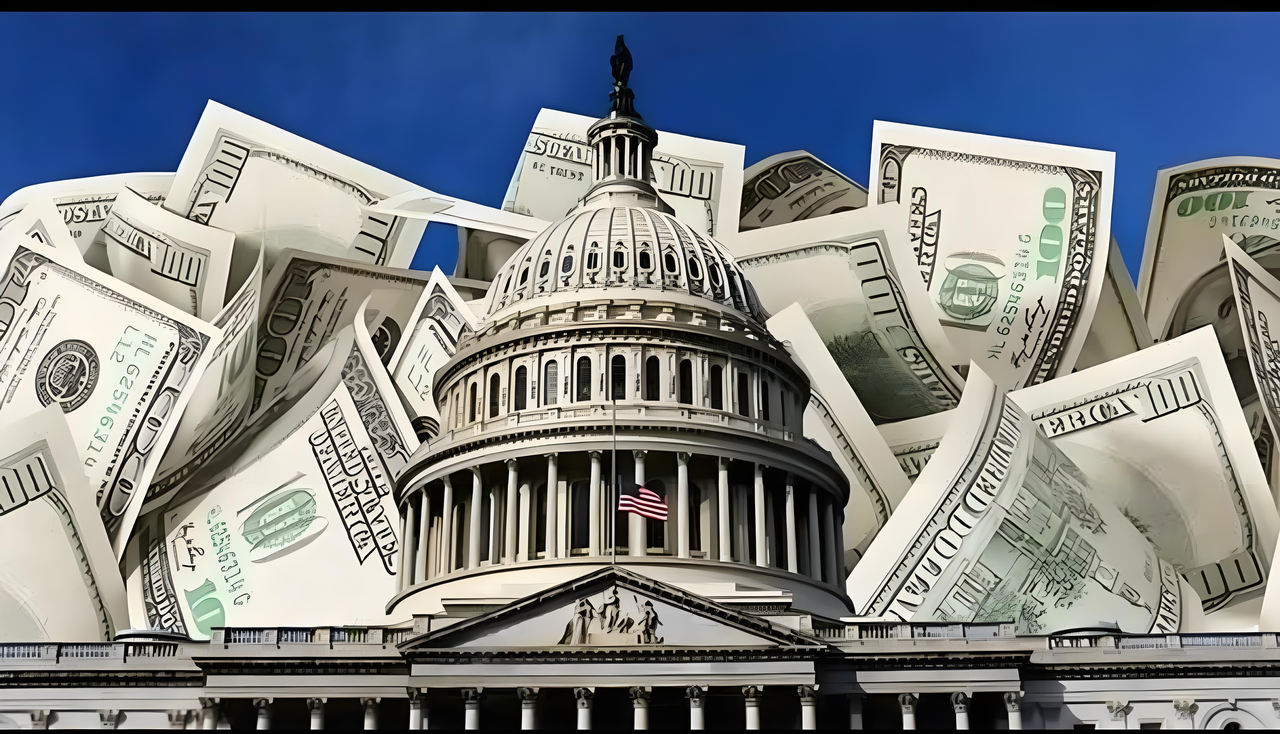The Origin of Strategic Reserves: The National Resource Game from Oil to Bitcoin
In 1975, the United States established the Strategic Petroleum Reserve in response to the oil crisis, which remains a core pillar of global energy security today. In 2025, this model was replicated in the cryptocurrency field— the Trump administration proposed including cryptocurrencies such as Bitcoin (BTC) in the national strategic reserve assets, marking America's transition from "oil hegemony" to "digital asset hegemony."
The starting point of this strategy can be traced back to July 2024, when Senator Cynthia Lummis submitted the "Bitcoin Strategic Reserve Act of 2024" (BITCOIN Act of 2024), planning to gradually establish a national reserve of 1 million BTC through annual purchases. Subsequently, Trump made "cryptocurrency strategic reserves" a core promise in his campaign, claiming to "make America the global crypto capital." As of March 2025, the U.S. government held approximately 200,000 BTC (worth about $21 billion), primarily sourced from criminal assets seized by the Department of Justice.
Policy Implementation Path: A Dual-Track Game of Executive Orders and Congressional Legislation

Currently, the advancement of the U.S. cryptocurrency strategic reserves faces two major paths:
The "Blitzkrieg" of Executive Orders
Trump plans to use a presidential executive order to instruct the Treasury Department to utilize the Exchange Stabilization Fund (ESF) to directly allocate BTC, bypassing the congressional approval process. This path could be initiated as early as the second half of 2025. The advantage lies in its high efficiency, but it faces legal controversies: the ESF is traditionally used to stabilize the dollar's exchange rate, and using it to purchase crypto assets could trigger constitutional lawsuits.
The "Protracted War" of Congressional Legislation
The BITCOIN Act must be passed by both houses of Congress, with core points of contention including:
Funding sources: whether to use the fiscal budget or issue special bonds for financing;
Reserve scale: radicals demand reaching 1 million BTC (approximately $1 trillion) within five years, while conservatives suggest keeping it within 1%-5% of Treasury bond assets;
Custody mechanism: whether the federal government should build its own cold wallet or entrust compliance institutions like Coinbase to manage it.
Global Market Turbulence: The "Nationalization" of Bitcoin and the Struggle for Pricing Power in Crypto Assets
The U.S. cryptocurrency strategic reserves have triggered a chain reaction:
Price volatility: On March 3, 2025, after Trump announced that the reserve plan would include tokens like XRP, SOL, and ADA, the related cryptocurrencies surged over 15% within 24 hours;
Sovereign funds following suit: Norway's sovereign fund, Singapore's GIC, and others began evaluating BTC allocation plans, pushing Bitcoin's market value to exceed $2 trillion;
Regulatory paradigm shift: The U.S. SEC abolished the "Employee Accounting Bulletin 121," which hindered crypto development, and established a special task force to coordinate policies.
Notably, this strategy is reshaping the dollar system: BTC reserves could become a "new anchor asset" alongside U.S. Treasury bonds, reinforcing the global settlement currency status through a "BTC-dollar" dual reserve model.
Controversy Swirl: Four Major Challenges of Strategic Reserves
Despite the enticing prospects, the U.S. cryptocurrency strategic reserves still face multiple doubts:
Technical risks: Security vulnerabilities such as BTC private key management and 51% attacks could threaten national financial security.
Legal conflicts: The Federal Reserve publicly opposes government-led accumulation of BTC, emphasizing that "monetary policy should not be tied to crypto assets."
Market manipulation suspicions: After the U.S. government holds a large amount of BTC, it could influence coin prices through policy adjustments, raising concerns of being "both referee and player."
International resistance: China and the European Union criticize the U.S. for "crypto unilateralism," planning to promote global crypto regulatory coordination within the IMF framework.
Future Projections: Threefold Changes in Crypto Geopolitics from 2025 to 2030
Digital Gold Standard War: The U.S. pushes for BTC as a reserve asset, while China bets on central bank digital currency (CBDC), and the EU explores paths for ETH compliance, forming a tripartite structure.
Crypto Cold War 2.0: If the U.S. successfully establishes BTC reserves, it may impose "crypto sanctions" on countries like Iran and North Korea that are "de-dollarizing," freezing their on-chain assets.
Convergence of Wall Street and Silicon Valley: Venture capital firms like a16z accelerate lobbying Congress to push for "DeFi protocols to be included in the strategic reserve ecosystem," achieving deep binding of capital and policy.
Hong Kong's Response: Opportunity Window for Web3 Compliance Hub
In response to the impact of the U.S. cryptocurrency strategic reserves, Hong Kong is consolidating its Web3 position through three major strategies:
Accelerating VASP license issuance: Four new licensed exchanges will be added by December 2024, attracting compliant capital from the U.S.;
Launching a stablecoin sandbox: Companies like JD.com and Standard Chartered participate in testing, exploring interoperability paths with U.S. dollar stablecoins;
Establishing a $100 million ecological fund: Focusing on incubating BTC Layer 2, compliant derivatives, and other sectors to hedge against U.S. policy volatility risks.
Conclusion: The "Bretton Woods Moment" of the Crypto Era
The U.S. cryptocurrency strategic reserves represent not only a transformation in asset allocation but also a "silent war" for monetary sovereignty in the digital age. Regardless of whether this plan ultimately materializes, it has forced global sovereign institutions to reassess the strategic value of crypto assets—just as the Bretton Woods system established dollar hegemony in 1944, 2025 may become the inaugural year of the "Digital Gold order."
Note: All data and policy developments in this article are sourced from the U.S. Department of the Treasury, congressional public documents, and research reports from the cryptocurrency industry.
免责声明:本文章仅代表作者个人观点,不代表本平台的立场和观点。本文章仅供信息分享,不构成对任何人的任何投资建议。用户与作者之间的任何争议,与本平台无关。如网页中刊载的文章或图片涉及侵权,请提供相关的权利证明和身份证明发送邮件到support@aicoin.com,本平台相关工作人员将会进行核查。




